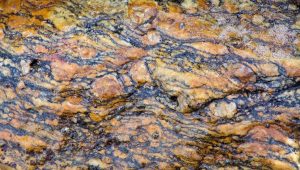Types of Rocks
Rocks are naturally occurring solid masses or aggregates of minerals, which make up the outer layer of earth, known as the earth’s crust. They are characterized and classified by their chemical composition, way of formation, grain size, texture, and the minerals they contain.
How Many Different Types of Rocks Are There
There are mainly the three following types of rocks based on their process of formation:

What are the Three Basic Rocks: List of Major Rock Types and Their Subtypes |
||||
1. Igneous Rocks Formed through the cooling and solidification of magma or lava, igneous rocks are the hardest and heaviest. The term ‘Igneous’ is in fact derived from the Latin word ‘igneus’, meaning ‘fire’. They are the ‘new’ rocks on earth. Properties & Characteristics: Dense, hard, and crystalline; rocky streamlined flow structures with no layers; not affected by chemical corrosion Examples: Granite, basalt, andesite, gabbro, obsidian, diorite, scoria, tuff, pumice Uses: In construction of buildings, flooring, interior decoration (granite); as abrasive (pumice); in production of concrete (basalt) |
||||
| Intrusive/Plutonic Igneous Rock: Magma slowly cools below the earth’s surface and forms large rock crystals
Examples: Granite, gabbro, diorite |
Extrusive/Volcanic Igneous Rock:
Magma comes out through a volcano as lava, cools rapidly and forms small rock crystals Examples: Basalt, andesite, obsidian, pumice, rhyolite |
|||
2. Sedimentary Rocks Formed by the accumulation of sediments, like fragments of older rocks, organic remains (shell, bones), and minerals that eventually compact and harden to rocks over a long period. These sediments are broken down by erosion and transported by rivers and streams to accumulate in layers on earth’s surface or at the bottom of lakes, and oceans. These layers can be identified in the rocks by differences in colors, particle size, and distribution of sediments. They are the ‘recycler’ rocks. Properties & Characteristics: Crumbles easily, can be scratched by fingernails; grainy texture due to layers of sand, silt or gravel; varying sizes of crystals Examples: Sandstone, conglomerate, chalk, claystone, breccias, shale, calcite, siltstone Uses: As a construction material (sandstone); production of chalk, lime, industrial carbon dioxide, cement, and in glassmaking (limestone); brick making and as base material under roads (shale) |
||||
| Clastic Sedimentary Rock: Formed due to accumulation of clasts (broken small rocks), which pile up to turn into rock due to compaction
Examples: Sandstone, conglomerate |
Chemical Sedimentary Rock: Formed when stagnant water evaporates from a solution, leaving dissolved minerals behind in closed water bodies to compact and harden to rock
Examples: Rock salt, iron ore, halite (common salt) |
Organic Sedimentary Rock: Formed due to accumulation of plant and animal debris
Examples: Coal, limestone |
||
3. Metamorphic Rocks Formed when any rock type is exposed to elevated temperature, pressure, or chemically active solution deep inside the earth’s surface. Eventually, the original rock metamorphoses or changes its structure to grow new crystals, like limestone changes into marble. These are the ‘change-makers’ of rocks. Properties & Characteristics: Lightweight, glassy appearance; relatively hard, but still easy enough to break; layered or foliated structure made up of crystals of the same size Examples: Gneiss (from granite), Amphibolite (from basalt), Quartzite (from quartz) Uses: Writing board (slate); flooring and sculpture material (marble); ballast in railroad construction (amphibolite) |
||||
| Foliated Metamorphic Rock: Produced by exposure to heat and directed pressure, distinguished by a layered appearance
Examples: Gneiss, phyllite, schist, and slate |
Non-foliated Metamorphic Rock: Formed in a similar manner, but distinguished from foliated rocks by their lack of layered appearance
Examples: Marble, hornfels and quartzite |
|||
FAQs
Ans. Pumice, an extrusive igneous rock floats in water as it has air pockets.
Ans. Fossils are often found in sedimentary rocks as they are easily impressionable.
Ans. Obsidian, a volcanic igneous rock has a gorgeous glass-like appearance as it forms by rapid cooling of lava.
Article was last reviewed on Wednesday, July 15, 2020






I think this is very cool and if I need any help with that kind of thing I will look to this.
good
im like really intersted in rocks so thanks for this website. i was wondering if you could possibly find a way to name a rock after me (: